
Carmel Raz
I'm an assistant professor of music and sound studies at Cornell University and Research Group Leader at the Max Planck Institute for Empirical Aesthetics in Frankfurt, where I direct the research group "Histories of Music, Mind, and Body."
less
Related Authors
Johannes Zachhuber
University of Oxford
Simon Werrett
University College London
David Seamon
Kansas State University
John Sutton
Macquarie University
Samuel LÉZÉ
École Normale Supérieure de Lyon
Tuomas Eerola
Durham University
Javier Marín-López
Universidad de Jaén
Dylan van der Schyff
University of Melbourne
Paulo Castagna
Universidade Estadual Paulista "Júlio de Mesquita Filho"
Matthew Daniel Eddy
Durham University
InterestsView All (6)
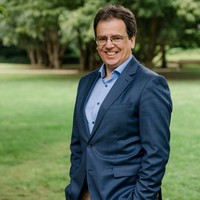



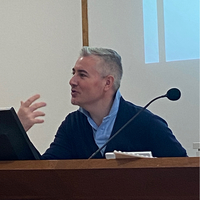
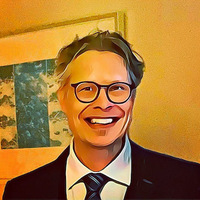


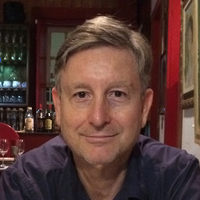
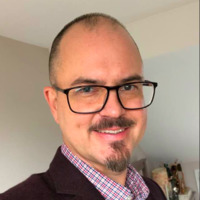
Uploads
Papers by Carmel Raz
Challenging our tendency to dismiss Berlioz’s musical writings as merely overheated Romantic effusions, I argue that the remarkable medical detail presented in his arguments reveals a hitherto neglected dimension of nineteenth-century engagement with the embodied effects of music. Contextualizing Berlioz’s claims within the neurophysiology of his age, and in particular the physiological psychology of Cabanis, the anatomy of Bichat, and the acoustic theories of Lamarck, I recover the medical and scientific epistemes that motivated the composer’s assertions about the power of music to effect embodied and emotional transformation: a constellation of ideas that I term his “neurophysiological imagination.”
An analysis in these terms of some of Berlioz’s major compositional innovations reveals how both his writings and his music explore an explicitly neurophysiological dimension of early Romantic listening experiences. Specifically, I propose that Berlioz repeatedly attempted both to represent and to induce an experience of great interest to the artists and audiences of his day: an overpowering mental and physical response to music experienced as an embodied, neurophysiological form of the sublime.
Victorian London. Introduced into s´eances by the Scottish American
Daniel Dunglas Home (1833–86), the most celebrated medium of the
era, the instrument was typically used to produce music without the
visible aid of a performer (what I call the “spirit accordian”). This article
seeks to explain why the accordion came to capture the imagination of
the nineteenth-century spiritualist community. It does so by reconstructing
the auditory culture in which the instrument was embedded,
relying on scientific writings, the popular press, and the sonic experiences
of both the spiritualists, who heard the spirit accordion as emitting
the ethereal tones of other worlds, and the skeptics, who described the
same sounds as grating squeaks. Linking the instrument and its role in
the s´eance to eighteenth-century theories of neurophysiology, the article
traces the spirit accordion’s various musical predecessors, arguing that
Home’s canny selection of the instrument to represent the next world
reflected the intersection of specific cultural signifiers.
Director Patrice Chéreau describes the nineteenth century as “our mythology and our past, containing our dreams” (Chéreau 1980: 430). His 1976 opera production of Richard
Wagner’s Der Ring des Nibelungen (1876), considered perhaps the most influential Ring cycle of all time, evokes a nineteenth-century dreamscape: gods, giants, dwarves and mermaids in dinner jackets and petticoats scheme against the backdrop of steel dams and massive cogwheels. Traditionally, critics have seen this production as a continuation of the Marxist legacy of George Bernard Shaw’s The Perfect Wagnerite (1898). Viewed instead as an early representative of steampunk, the social critique, environmental concerns, and retro-futuristic ideas featured in this staging become contextualised within a coherent framework – one that explores contemporary social and technological anxieties through the metaphor of an epic fantasy world.
Keywords:
Patrice Chéreau, Der Ring des Nibelungen, magic, myth, nineteenth century, opera, Richard Wagner, staging, steampunk, technology"
This article contextualizes Toch’s compositional choices within the artistic, political, and scientific discourses of the Weimar Republic, with a focus on relationship between exoticism, experimental art and technology, postwar constructions of the body, and the influence of contemporary research on phonetics and sound reproduction. The latter are also examined through a linguistic analysis of the vowel and syllabic distribution within the “Geographical Fugue” itself. Finally, the afterlife of these features is explored in various contemporary remixes of Toch’s work on YouTube, and the ways in which contemporary possibilities of musical creation enable the work to return to a state that evokes its original context of technological experimentation.
Reviews by Carmel Raz
Challenging our tendency to dismiss Berlioz’s musical writings as merely overheated Romantic effusions, I argue that the remarkable medical detail presented in his arguments reveals a hitherto neglected dimension of nineteenth-century engagement with the embodied effects of music. Contextualizing Berlioz’s claims within the neurophysiology of his age, and in particular the physiological psychology of Cabanis, the anatomy of Bichat, and the acoustic theories of Lamarck, I recover the medical and scientific epistemes that motivated the composer’s assertions about the power of music to effect embodied and emotional transformation: a constellation of ideas that I term his “neurophysiological imagination.”
An analysis in these terms of some of Berlioz’s major compositional innovations reveals how both his writings and his music explore an explicitly neurophysiological dimension of early Romantic listening experiences. Specifically, I propose that Berlioz repeatedly attempted both to represent and to induce an experience of great interest to the artists and audiences of his day: an overpowering mental and physical response to music experienced as an embodied, neurophysiological form of the sublime.
Victorian London. Introduced into s´eances by the Scottish American
Daniel Dunglas Home (1833–86), the most celebrated medium of the
era, the instrument was typically used to produce music without the
visible aid of a performer (what I call the “spirit accordian”). This article
seeks to explain why the accordion came to capture the imagination of
the nineteenth-century spiritualist community. It does so by reconstructing
the auditory culture in which the instrument was embedded,
relying on scientific writings, the popular press, and the sonic experiences
of both the spiritualists, who heard the spirit accordion as emitting
the ethereal tones of other worlds, and the skeptics, who described the
same sounds as grating squeaks. Linking the instrument and its role in
the s´eance to eighteenth-century theories of neurophysiology, the article
traces the spirit accordion’s various musical predecessors, arguing that
Home’s canny selection of the instrument to represent the next world
reflected the intersection of specific cultural signifiers.
Director Patrice Chéreau describes the nineteenth century as “our mythology and our past, containing our dreams” (Chéreau 1980: 430). His 1976 opera production of Richard
Wagner’s Der Ring des Nibelungen (1876), considered perhaps the most influential Ring cycle of all time, evokes a nineteenth-century dreamscape: gods, giants, dwarves and mermaids in dinner jackets and petticoats scheme against the backdrop of steel dams and massive cogwheels. Traditionally, critics have seen this production as a continuation of the Marxist legacy of George Bernard Shaw’s The Perfect Wagnerite (1898). Viewed instead as an early representative of steampunk, the social critique, environmental concerns, and retro-futuristic ideas featured in this staging become contextualised within a coherent framework – one that explores contemporary social and technological anxieties through the metaphor of an epic fantasy world.
Keywords:
Patrice Chéreau, Der Ring des Nibelungen, magic, myth, nineteenth century, opera, Richard Wagner, staging, steampunk, technology"
This article contextualizes Toch’s compositional choices within the artistic, political, and scientific discourses of the Weimar Republic, with a focus on relationship between exoticism, experimental art and technology, postwar constructions of the body, and the influence of contemporary research on phonetics and sound reproduction. The latter are also examined through a linguistic analysis of the vowel and syllabic distribution within the “Geographical Fugue” itself. Finally, the afterlife of these features is explored in various contemporary remixes of Toch’s work on YouTube, and the ways in which contemporary possibilities of musical creation enable the work to return to a state that evokes its original context of technological experimentation.
To be entranced, transported, or to drift into the uncharted realms of dreams… From radical derangement to passing boredom, from hypnosis to sleep or anesthesia, from drugs and medicine to ecstatic fervors of faith, “altered states” constitute a recurrent trope of our ways of relating to our perceptive and affective lives. Encompassing continuities and ruptures, the notion of altered states structures our experience of the world, and forms an integral part of our constructed narratives of consciousness.
But “altered” with respect to what: a norm or baseline which, like bodily homeostasis, presupposes a hypothetical resting state? With regard to a graduation of changes extending across various spectrums? What understanding of the mind and body is provided by the poles of alteration and normality? How are we to distinguish between the end and beginning of various states, or to order them within a hermeneutical catalogue? As we exist in time, and are conditioned by the experience of change, our consciousness, bodies, and even existences, are perhaps necessarily, continually, altered. Moreover, if the notion of alteration implies disruption, does it make sense to talk about states at all, to the extent that this term implies a degree of stability and dependability, rather than pure dynamic flux?
While a series of “altered” objects—whether bodies, personalities, or states—took center stage in modern epistemologies such as psychiatry, both the aesthetic subject and the work of art were increasingly conceived of as prime sites of transformative experience. In a global context, music, literature, and the performing arts, as disciplines of temporal absorption, are frequently seen as the cause of altered states—in spectators and readers, in performers and authors—or as literal incarnations of altered states themselves, in a mode of aesthetic embodiment. From the point of view of the feeling and perceiving subject, the alteration of one’s own states—or even of the self—is actively practised as a means to access “higher” forms of existence, or as a disturbing distortion.
This international conference, which will take place in Paris on June 1-2, 2018 at the Sorbonne and the Institut National d’Histoire de l’Art (INHA), will investigate the concept of altered states in theoretical debates, socio-historical discourses, and in the creation of works of art and their reception. Bringing together scholars with a wide range of disciplinary orientations, the conference will consist of both panel sessions and discussions of pre-circulated papers. A second installment entitled “Synesthesia” will take place at the Max Planck Institute for Empirical Aesthetics in Frankfurt in early 2019.
Organizers: Céline Frigau Manning (Université Paris 8—Institut Universitaire de France), Nicholas Manning (Sorbonne Université), Carmel Raz (Columbia University— Max Planck Institute for Empirical Aesthetics)
Understandings of the body, as shared between the musical and the scientific spheres, will lie at the heart of our exploration. The late eighteenth century saw various conceptions of the body set into flux, influenced by the writings of philosophers such as Rousseau and Diderot. In the domain of the medical sciences, Jean-Nicolas Corvisart and René Laënnec regarded the body as a site from which to develop new understandings of timbre and listening, while Xavier Bichat reinvigorated the Vitalist frameworks of sympathy and harmony in order to examine the relationship between various executive organs of the body. This period also saw the rise of new “moral” approaches toward insanity associated with Philippe Pinel, as well as the phrenological classifications of the Paris-based Franz Joseph Gall. The repercussions of these developments were directly felt in the musical realm, and played out on the operatic stage, in the soundscapes of Revolutionary festivals, and in theoretical, medical, and governmental inquiries into the relationships between music and human behavior.
This interdisciplinary workshop will examine the interaction between music, science, and medicine in Paris, as they were influenced by the reframing of the self in the aftermath of successive revolutionary upheavals. It will bring together scholars from the fields of musicology, performance studies, literature, and the history of science and medicine in order to explore historical and emerging contemporary perspectives on the body. On Saturday we will be holding a workshop for conference participants to discuss draft papers. We encourage interested scholars from Columbia and the New York area to join the conversation. Pre-registration is required (further details to come).
Schedule
Friday, March 31: Conference
2:00-4:00pm: Nineteenth-Century Music and Science
John Tresch, "La Technaesthetique, or the Kick of the Cosmos"
Mark Pottinger, “Science, Madness, and the Sound of Disease in Donizetti's 'Lucia di Lammermoor' (Paris, 1837)”
David Trippett, “Sound and the Ultrasonic Imagination ca. 1876”
Chair: Lydia Goehr
4:00-4:30: Break
4:30-6:30pm: Bodies Politic
Julia Doe, “On the Well-Being of Queen and Nation: Politics and Pastoral Fantasy at the Petit Trianon”
Rebecca Geoffroy-Schwinden, “Music and the French Body Politic in Festivals of the French Revolution”
Francesca Brittan, “Neology, Fantasy, and the Revolutionary Body Politic”
Chair: Elise Bonner
On Saturday we will be holding a workshop for conference participants to discuss draft papers. We encourage interested scholars from Columbia and the New York area to join the conversation. Pre-registration is required (further details to come).
Saturday, April 1st: Workshop
10-11: Isabelle Moindrot, “Musique et musiciens de la Grande armée. Traces et rémanences culturelles de quelques usages non artistiques de la musique”
Respondent: Annelies Andries
11-12: James Davies, “Creatures of the Air”
Respondent: Michael Weinstein-Reiman
12-12:30: Break
12:30-1:30: Emmanuel Reibel, “La musique comme corps : la métaphore de la dissection dans la critique (1820-1850)”
Respondent: Arden Hegele
1:30-2:30: Break
2:30-3:30: Céline Frigau Manning, “Opera and Hypnosis. Victor Maurel’s Experiments in Suggestion With Verdi’s Otello”
Respondent: Jessica Simon
3:30-4: Break
4-5: Carmel Raz, “Operatic Fantasies in Early 19th C. Psychiatry”
Respondent: Jeremy Blatter
http://heymancenter.org/events/music-and-the-body-between-revolutions-paris-1789-1848/